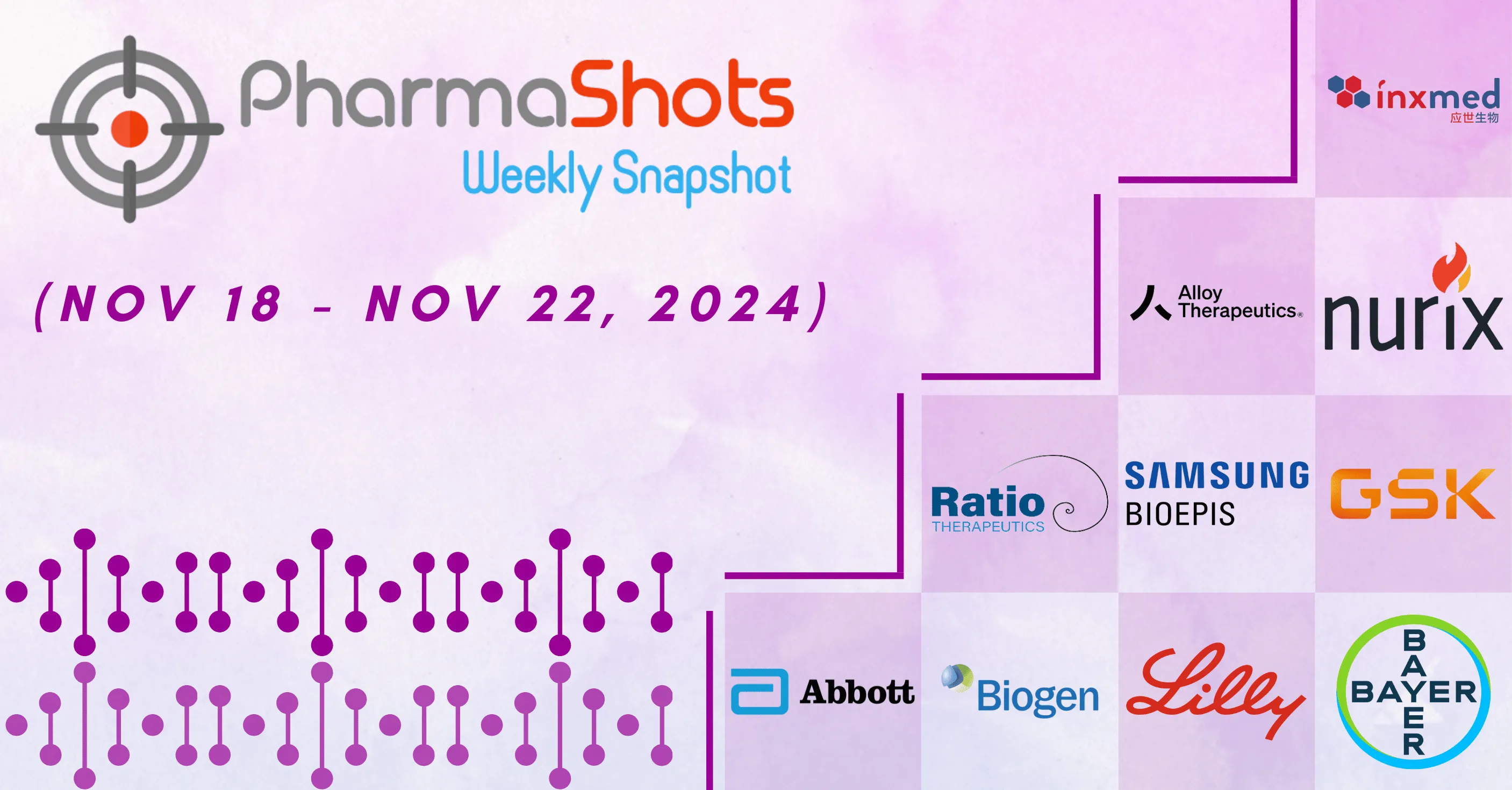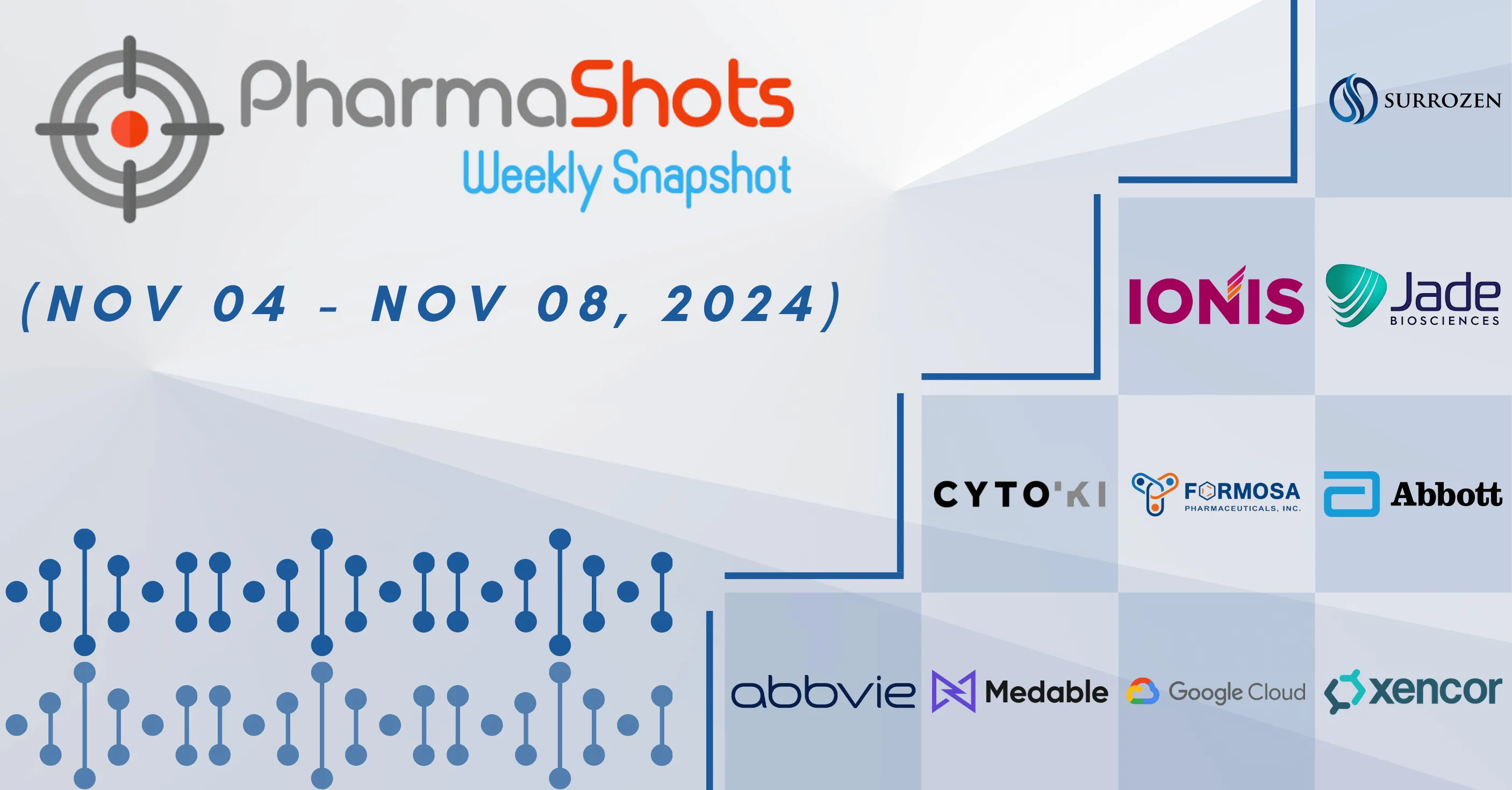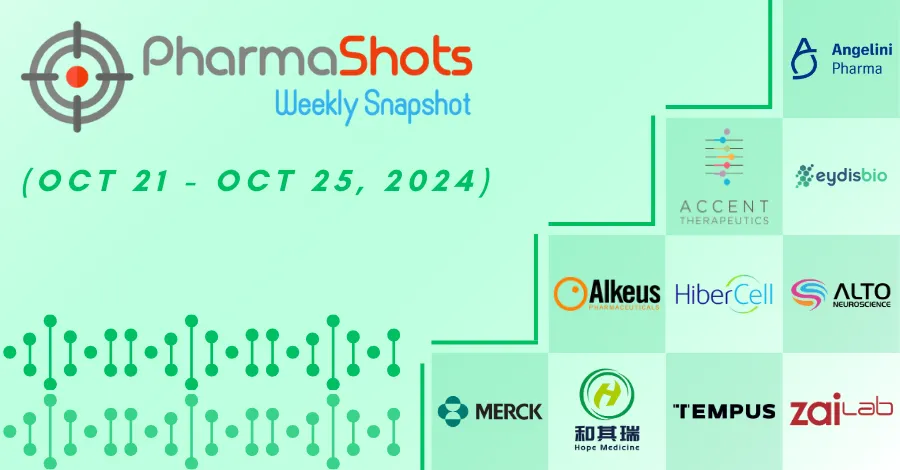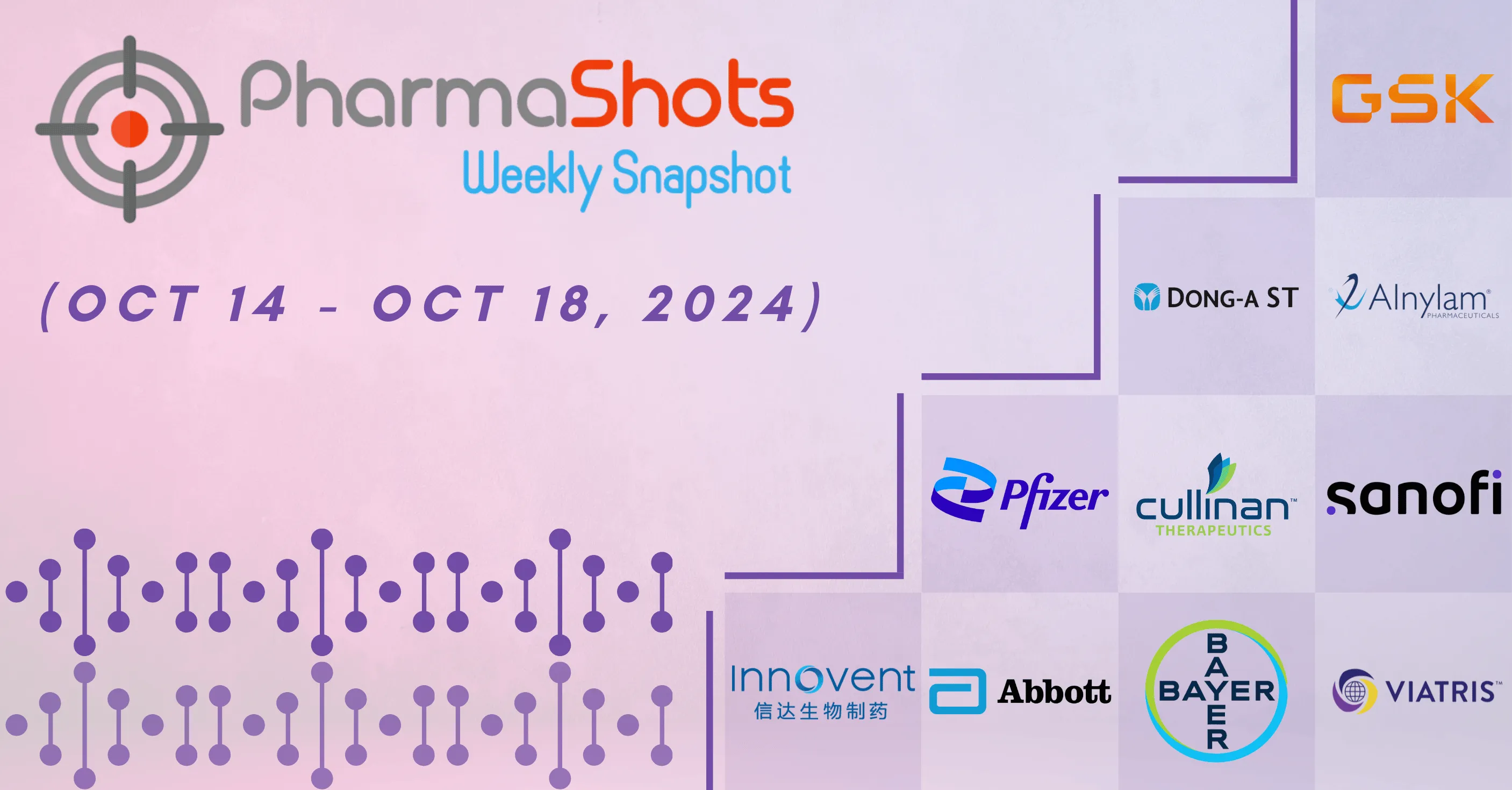
PharmaShots Weekly Snapshots (Jan 25- 29, 2021)
Published: Jan 29, 2020 | Tags: Roche, Collaborate, Cambridge Quantum Computing, Develop, Quantum Algorithm, Drug, Discovery, Development
Published: Jan 29, 2020 | Tags: Janssen, Reports, Results, Amivantamab, P-I, CHRYSALIS, Study, Metastatic, Unresectable, NSCLC, EGFR, Exon 20, Insertion, Mutations
Lilly Signs a License Agreement with Asahi Kasei Pharma for AK1780 to Treat Chronic Pain
Published: Jan 29, 2020 | Tags: Lilly, Signs, License, Agreement, Asahi Kasei Pharma, AK1780, Treat, Chronic Pain
Published: Jan 29, 2020 | Tags: Bio-Thera Solutions, Reports, US, FDA, Acceptance, BLA, BAT1706, (Proposed Biosimilar to Avastin)
Amgen Report Results of Sotorasib in P-II Study for KRAS G12C-Mutated Advanced NSCLC
Published: Jan 29, 2020 | Tags: Amgen, Report, Results, Sotorasib, P-II, Study, KRAS G12C, Mutated, Advanced, NSCLC
Merck Signs an Exclusive Worldwide License Agreement with Artiva to Develop CAR-NK Cell Therapies
Published: Jan 29, 2020 | Tags: Merck, Signs, Exclusive, Worldwide, License, Agreement, Artiva, Develop, CAR-NK Cell, Therapies
Published: Jan 28, 2020 | Tags: BioInvent, Report, Results, BI-1206, Rituximab, P- I/IIa, Study, Relapsed, Refractory, B-cell, Non-Hodgkin's, Lymphoma
Published: Jan 28, 2020 | Tags: ImaginAb, Signs, Multi-Year, Non-Exclusive, License, Agreement, Neuvogen, CD8, ImmunoPET, Technology
Published: Jan 28, 2020 | Tags: Regeneron, REGEN-COV, Antibody, Cocktail, Confirms, Effectiveness, Against, UK, South Africa, SARS-CoV-2, Variants
Published: Jan 28, 2020 | Tags: Pfizer, Xeljanz (tofacitinib), Fails, Meet, Co-Primary, Endpoint, ORAL, Surveillance, Safety, Study
AstraZeneca Selects AI-Generated CKD Target Under its Collaboration with BenevolentAI
Published: Jan 28, 2020 | Tags: AstraZeneca, Selects, AI-Generated, CKD, Target, Collaboration, BenevolentAI
Published: Jan 28, 2020 | Tags: Eli Lilly, Collaborates, GSK, VIR, Evaluate, Bamlanivimab (LY-CoV555), VIR-7831 (GSK4182136), COVID-19
Abbott's Panbio Rapid Antigen Test Receives CE Mark for Mass COVID-19 Screening
Published: Jan 27, 2020 | Tags: Abbott, Panbio, Rapid, Antigen Test, Receives, CE, Mark, Mass, COVID-19, Screening
Published: Jan 27, 2020 | Tags: AbbVie, Rinvoq (upadacitinib), Receives, EC, Approval, Psoriatic Arthritis, Ankylosing Spondylitis
Regeneron Reports Results of REGEN-COV Antibody Cocktail Used as Passive Vaccine to Prevent COVID-19
Published: Jan 27, 2020 | Tags: Regeneron, Reports, Results, REGEN-COV, Antibody, Cocktail, Passive, Vaccine, Prevent, COVID-19
Published: Jan 27, 2020 | Tags: Shionogi, Concludes, License, Agreement, BioAge, BGE-175, Control, Aggravation, COVID-19
Published: Jan 27, 2020 | Tags: Eli Lilly, AbCellera, Report, Results, Bamlanivimab (LY-CoV555), Etesevimab (LY-CoV16), P-II/III, BLAZE-1, Study, Preventing, COVID-19
Published: Jan 27, 2020 | Tags: Merck, Keytruda (pembrolizumab), Receives, EC, Approval, 1L, Treatment, Metastatic, Microsatellite, Instability-High (MSI-H), Mismatch Repair Deficient (dMMR), Colorectal Cancer
Published: Jan 25, 2020 | Tags: Ervaxx, Cardiff University, Collaborate, Develop, Novel T-cell, T-cell, Receptor-based, Immunotherapeutics, Targeting, Dark Antigens
Published: Jan 25, 2020 | Tags: Incyte, Reports, Acceptance, Priority Review, BLA, Retifanlimab, Treat, Patients, Squamous Cell Carcinoma, Anal Canal (SCAC)
Published: Jan 25, 2020 | Tags: Pfizer, BioNTech, Signs, Agreement, Covax, Advance Purchase, Vaccine, Help, Combat, COVID-19
Published: Jan 25, 2020 | Tags: Aurinia, Lupkynis (voclosporin), Receives, US, FDA, Approval, Treat, Adult, Patients, Active, Lupus Nephritis
Published: Jan 25, 2020 | Tags: P&G, Signs, License, Agreement, Rhinostics, Launch, Novel, Nasal Swab, Market, Rapid, COVID-19, Testing, Address, Supply, Shortages
Published: Jan 25, 2020 | Tags: Exelixis, Cabometyx (cabozantinib), Opdivo (nivolumab), Receives, US, FDA, Approval, 1L, Treatment, Patients, Advanced, Renal, Cell, Carcinoma
Related Post: PharmaShots Weekly Snapshots (Jan 18 - 22, 2021)
Tags

This content piece was prepared by our former Senior Editor. She had expertise in life science research and was an avid reader. For any query reach out to us at connect@pharmashots.com














